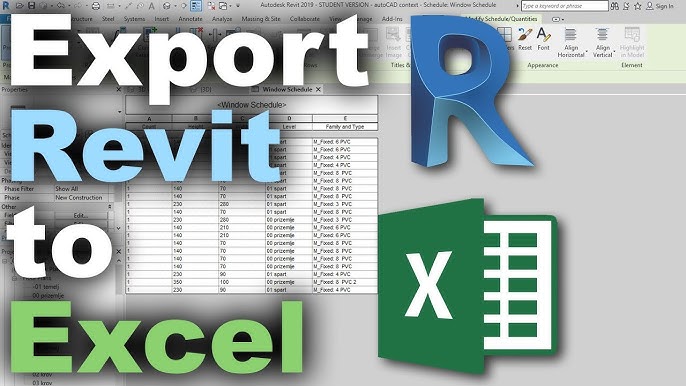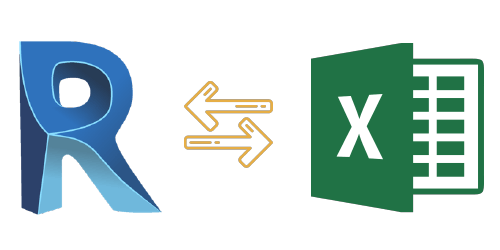Improve Your Workflow with Effective Revit Add Ins
Wiki Article
Breaking Obstacles: Excel Importation Techniques for Advanced Revit Users
Are you an advanced Revit individual seeking to take your abilities to the following level? In this article, we will certainly reveal you how to break obstacles by leveraging Excel for importation in Revit. Discover various information importation approaches and master Excel integration to improve your Revit modeling capabilities. With our suggestions and techniques, you can conquer importation challenges and come to be a true specialist in utilizing Excel for your Revit tasks. Prepare yourself to succeed in your Revit trip!Advanced Revit Users: Leveraging Excel for Importation
You can conveniently leverage Excel for importation as an advanced Revit individual. Excel is an effective device that can greatly boost your workflow and efficiency in Revit. With its capability to take care of large quantities of data and do intricate calculations, Excel can be a valuable property in managing and organizing your project details.One means to take advantage of Excel for importation is by utilizing the "Link Excel" attribute in Revit. This function permits you to connect an Excel spreadsheet directly into your Revit project, allowing you to update and synchronize data between the two programs. When dealing with timetables or tracking changes in your job., this can be particularly helpful.
Another way to make use of Excel is by utilizing the "Import/Export" function in Revit. This feature enables you to import and export data between Revit and Excel, giving you the flexibility to function with data in both programs. You can import data from Excel into Revit to produce elements such as doors, walls, or spaces, and you can also export data from Revit to Excel for additional evaluation or reporting.

Exploring Information Importation Techniques in Revit Making Use Of Excel
Discovering how to import data from Excel right into Revit supplies effective techniques for incorporating info. When you import information from Excel, you can perfectly transfer information such as space schedules, material lists, and tools information into your Revit task. This procedure permits you to save time and effort by staying clear of hands-on information entry.To import data from Excel right into Revit, you can utilize the "Import/Export" attribute. This feature enables you to map the Excel information fields to the equivalent Revit criteria, making certain that the info is correctly assigned within the version. By selecting the proper import choices, you can regulate just how the information is imported and just how it engages with your project.
An additional technique for importing information from Excel right into Revit is by making use of Eager beaver. With Dynamo, you can develop custom-made scripts that import data from Excel and adjust it within your Revit task.
Grasping Excel Combination for Advanced Revit Modeling
One crucial method is importing information from Excel spread sheets directly into your Revit model. With a couple of simple actions, you can map the Excel columns to the equivalent Revit criteria and import the data precisely.Another beneficial method is exporting data from Revit to Excel. This enables you to extract information from your version, such as schedules or material quantities, and examine it in Excel making use of formulas, graphes, or other powerful devices. By leveraging the abilities of Excel, you can perform complicated calculations, create personalized reports, and gain useful understandings right into your task.
Along with information transfer, Excel assimilation can automate repetitive jobs in Revit. By creating macros or manuscripts in Excel, you can automate procedures like creating views, producing sheets, or applying basic families - revit plugins. This not just saves time however also makes certain uniformity across your project
To master Excel integration in Revit, it is critical to recognize the data framework and how Revit communicates with Excel. By familiarizing yourself with the offered tools and techniques, you can open the complete possibility of Excel combination and take your Revit modeling to the next level.
Overcoming Importation Obstacles: Excel Techniques for Revit Specialists
When conquering importation obstacles, it's essential to be acquainted with reliable Excel methods that can profit professionals in Revit. As a sophisticated Revit customer, you understand the importance of perfectly importing data from Excel right into your projects.
One more valuable method is using the "Transpose" feature in Excel. This allows you to convert information from rows to columns or vice versa. When importing data into Revit, this can be specifically useful when you have data in an upright style in Excel, however you require it to be in a horizontal style in Revit.
Moreover, using Excel formulas such as VLOOKUP and INDEX-MATCH can significantly help in mapping information from Excel to Revit. These formulas allow you to browse for certain values in Excel and retrieve equivalent data from one more column. This can conserve you effort and time when importing big datasets right into Revit.
Excel Data Importation Advice for Advanced Revit Users
By familiarizing yourself with efficient Excel suggestions and methods, you can enhance your data importation procedure as an advanced individual of Revit. Excel is an effective tool that can substantially help with the importation of data right into Revit, conserving you time and increasing your efficiency. One useful tip is to utilize the "Text to Columns" feature in Excel to divide information right into various columns based on a delimiter. This can be particularly valuable when you have information in a single column that needs to be divided right into several columns in Revit. Additionally, using Excel's "Paste Unique" function enables you to paste data from Excel right into Revit while keeping formatting, such as cell shade or font design. When importing information that needs details format in Revit, this can be particularly useful. One more practical technique is revit tool to utilize Excel's "Replace and locate" feature to promptly make adjustments to your data before importing it right into Revit. For instance, you can easily replace particular message or personalities with others, saving you the moment and initiative of manually editing and enhancing the data in Revit. By making use of these Excel tips and methods, you can simplify your information importation process and become also more efficient being used Revit.
Verdict
You have actually currently learned important techniques for importing data from Excel right into Revit as an advanced customer. By leveraging the power of Excel combination, you can simplify your modeling process and overcome any kind of importation challenges that may arise. With these methods and pointers, you will be able to grasp information importation and boost your Revit abilities. So go ahead, damage those barriers and excel in your Revit tasks!
When importing information right into Revit, this can be specifically helpful when you have information in a vertical style in Excel, yet you require it to be in a horizontal style in Revit.
Moreover, utilizing Excel solutions such as VLOOKUP and INDEX-MATCH can greatly assist in mapping data from Excel to Revit. Furthermore, making use of Excel's "Paste Special" function permits you to paste data from Excel right into Revit while maintaining formatting, such as cell color or font design.
Report this wiki page